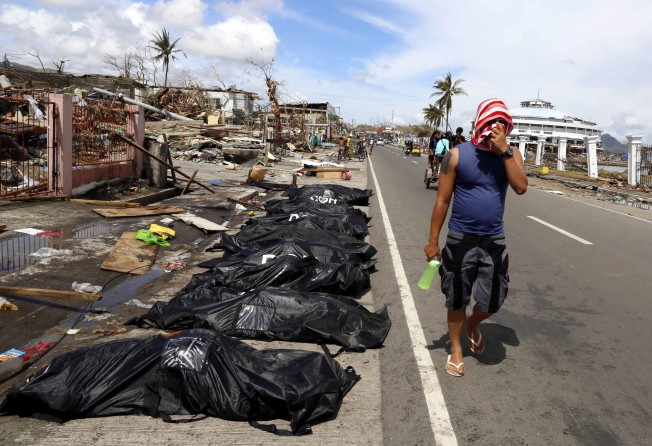
Confusion over Haiyan body count, but rescuers focusing on aid
Accurate body count from Haiyan won't be known for a while, but for rescuers on the ground the immediate priority is helping those in need

In the chaos of natural disaster, tallying an accurate death toll is often difficult and sometimes not a priority.

In one sense, it matters little outside of newsrooms. Any number of dead is a tragedy, whether it be 2,000, 3,000 or 10,000. In terms of planning emergency relief operations, the amount of people needing assistance and damage to infrastructure are often more important. Over time, a final toll is tallied, or in the case of larger disasters, an estimate agreed upon.
The following factors have been attributed to the death toll confusion in the Philippines: downed communication lines, making it impossible to get up-to-date information; shattered local administrations unable to work to full capacity; villagers burying their dead immediately or bodies being sucked out to sea and not being counted.
Similar factors were cited in the aftermath of the 2004 Asian tsunami, where in some instances separate government departments in Indonesia were giving out significantly different figures, each unconcerned about the confusion this created.
Video: Chaos in stricken Philippine city amid wait for aid
On Sunday, two days after the typhoon in the Philippines, a regional police official told reporters that the death toll was estimated at 10,000, based on reports from local village chiefs collected by the governor. The same day, the mayor of Tacloban city, one of the worst-hit areas, estimated that 10,000 could have died in his city alone.
The National Disaster Risk Reduction and Management Council updated its death toll yesterday to 2,344 dead, with 79 missing. That figure is an actual body count from affected regions and has been steadily increasing since day one of the disaster.
Aquino, in a televised interview with CNN, said the figure of 10,000 feared or estimated dead, which has been widely quoted in the media, was "too much".
"We're hoping to be able to contact something like 29 municipalities left wherein we still have to establish their numbers, especially for the missing, but so far 2,000, about 2,500, is the number we are working on as far as deaths are concerned," he said.
But some aid workers expressed scepticism at Aquino's dramatically lower death toll. "Probably it will be higher because numbers are just coming in. Many of the areas we cannot access," Gwendolyn Pang, secretary general of the Philippine Red Cross, said.
The preliminary number of missing, according to the Red Cross, is 22,000. Pang cautioned that figure could include people who have since been located. "They report their relatives missing but they don't alert us when they are found," she said.
Natasha Reyes, emergency co-ordinator in the Philippines at Medecins Sans Frontieres, described the devastation as unprecedented for the disaster-prone archipelago.
"There are hundreds of other towns and villages stretched over thousands of kilometres that were in the path of the typhoon and with which all communication has been cut," Reyes said.
Google, which has set up websites to help people share and look for information about missing persons during catastrophes, currently lists some 65,500 people as missing from the typhoon.
But Google staff warned against reading too much into the data, pointing out that a similar website set up after the Japanese tsunami in 2011 listed more than 600,000 names, far higher than the final death toll of nearly 20,000.
Finance Secretary Cesar Purisima said the economic damage in the coconut- and rice-growing region would probably shave 1 percentage point off the country's economic growth next year.
The overall financial cost of the destruction is harder to assess. Initial estimates varied widely, with a report from German-based CEDIM Forensic Disaster Analysis putting the total at US$8 billion to US$19 billion.
Associated Press, Reuters